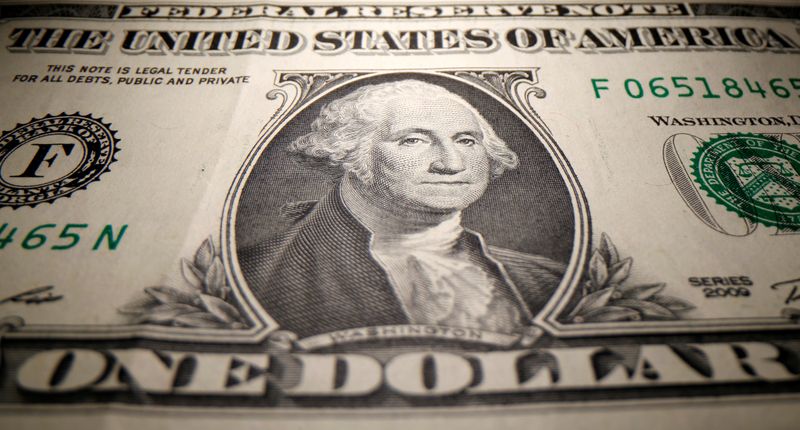By Karen Brettell
NEW YORK (Reuters) – The dollar dropped on Thursday after Federal Reserve Chair Jerome Powell was interpreted as being generally dovish in comments made at an economic forum, even as he warned that the U.S. central bank could raise interest rates again.
The U.S. economy’s strength and continued tight labor markets could warrant further rate increases, Powell said. But he also noted that recent market-driven increases in bond yields have helped to “significantly” tighten overall financial conditions.
The comments were “marginally more dovish, I guess, but he was pretty careful to leave the door open to more tightening if the economic circumstances warrant that. It was a pretty even-handed message, I think,” said Shaun Osborne, chief foreign exchange strategist at Scotiabank in Toronto.
Several Fed officials in recent weeks have noted the impact of rising Treasury yields. The benchmark 10-year yield reached a 16-year high of 4.996% on Thursday.
“Financial conditions are tightening, there’s no getting around that. It moves the needle towards the Fed doing less rather than more,” Osborne said.
Markets expect the Fed to hold rates at current levels for the foreseeable future, but are pricing in some probability of an additional increase.
Fed funds futures imply a 30% probability the Fed will raise rates in December, down from 39% before Powell’s comments, and no chance of a hike in November, according to the CME Group’s FedWatch Tool.
The dollar index was last down 0.27% on the day at 106.24. The euro gained 0.42% to $1.0581.
The rally in the greenback has largely stalled and the currency has consolidated since the index hit a 10-month high on Oct. 3.
“The focus has been on the Treasuries … and most of the focus and the volatility has been in longer-term yield, which tend to have less of a direct impact on FX markets than the front-end yields typically,” said Vassili Serebriakov, an FX strategist at UBS in New York.
“It’s to some extent the question of are long-term yields rising because of the stronger growth outlook in the U.S., or is there also an element of supply impact and concerns over longer-term fiscal policy?” he added. “I think that’s maybe why the impact on FX is a little bit less straightforward.”
The rally in the greenback is also seen as stretched, with the index having risen by 6.7% since mid-July and many investors already holding the currency.
“Dollar longs are already quite significant and maybe preventing the dollar from rallying further at this point,” Serebriakov said.
Concerns over the conflict between Hamas and Israel remain a factor that may increase safe haven demand for the U.S. currency.
The Japanese yen gained slightly on the day but remained near the 150 level against the U.S. dollar, where traders see a risk that Japanese officials could intervene to shore up the currency. It was last at 149.85.



